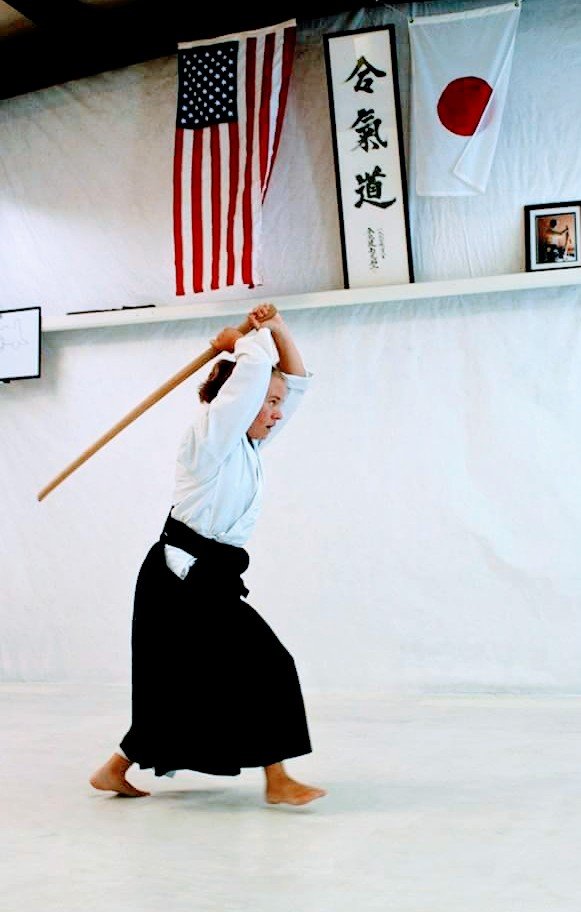Holding Your Breath
Focus, Intention, and the Value in the Pause.
“Breathe in,” Sensei said as he raised his sword to the sky, aligning it with his midline as if it were a lightning rod. “Imagine drawing energy down this line, to concentrate it here,” the sword sunk into a ready position, held at the hara, the physical center of the body.
“Hold your breath.”
I did as directed, closing my throat to prevent the air escaping. The breath did not want to be held. It strained against my upper chest, begging for release. Internally I squirmed, waiting for Sensei to move, to give the signal to release the energy I was struggling to hold in my lungs and in my sword.
Breath is Energy
Kokyu the Japanese word for breath, is used synonymously with energy, power, and spirit. This is not unique to Japan. In Greek pneuma, in Hawaiian ha, and likely in many languages around the world, the word used to describe air moving in and out of the body is also used to describe energy, power, or spirit.
Even my secular, American education taught me that my cells require oxygen to convert sugars into energy - especially those of my muscles, and brain. Yet I never received any training on how to use the gift of breath, until I stepped onto an Aikido mat.
Aikido is Non-Resistance
Oh, how often I have felt the way I did then, straining to hold my breath in that bokken suburi! I don’t like to be idle; my natural inclination is to fill the spaces in between with activity. This includes fidgeting, distraction, and meaningless tread water activities. At times when it is important to stay on task, like in slow-moving traffic or when working on long-term goals, I’ve felt the urge to do anything else fighting my willpower like a held breath beating against the inside of my ribcage.
Will the marketing activities I've been doing ever pay off? When will I get out of debt? When will the crypto market rise again? When, when when?!
Before Aikido, I don’t think I ever noticed these times when I was fighting against myself. On the mat, I began to discover that whenever I encountered resistance, it was usually my own. “Uke does no wrong,” Sensei would say, deflating any urge I had to blame my struggles on my partner. An oversimplification, but not untrue: my partners challenged me, but never with the intent to defeat me. If I couldn’t see the way through the challenge, it was I who was getting in my own way.
Don’t Think of a Blue Elephant!
Ever notice how hard it is to not do something? Don’t push, don’t pull, don’t breathe out… "don’t* fight into someone’s power. Unless you know what to do instead, your automatic urge is to go with your first impulse. This is where training and practice comes in.
Sensei said “hold” your breath. Not “hold back,” “hold.” Your body has an automatic urge to breathe in and out at a regular pace, but you also have conscious control at two points: your throat, and your diaphragm. When you hold back your breath at the throat, there will be tension between these two points. When you hold the position of your diaphragm after either inhale or exhale, you will find stillness, for as long as you can hold.
Suburi
Aikido suburi is self-practice, training you can do without the need of a partner or a mat. The breath practice I describe here is bokken suburi #3 (practice with wooden training sword.) Raise the sword directly overhead while drawing your body back, off the line of attack. Inhale fully into your diaphragm as you draw the sword from this position down to your strong base of support. Hold a moment - feel your breath, your balance, the power coiled in your legs, and see the space around you. Then step forward and exhale with a powerful shomenuchi strike!

“Consider the ebb and flow of the tide. When waves come to strike the shore, they crest and fall, creating a sound. Your breath should follow the same pattern, absorbing the entire universe in your belly with each inhalation.”
- Morehei Ueshiba, The Art of Peace
This is lovely. I would love to do that sort of training. That slowing down, the pause - that is such a tricky thing like you said.
Thank you!
The breathing alone is good training. I actually read about something called 'combat breathing,' breathe in for four counts, breathe out for four counts, hold four counts before breathing in. It's meant to reduce anxiety. To do it without strain or effort, I learned to activate my diaphragm. That's when I realized what was missing from my suburi practice!
Congratulations @wholeself-in! You have completed the following achievement on the Steem blockchain and have been rewarded with new badge(s) :
You can view your badges on your Steem Board and compare to others on the Steem Ranking
If you no longer want to receive notifications, reply to this comment with the word
STOPTo support your work, I also upvoted your post!
Vote for @Steemitboard as a witness to get one more award and increased upvotes!
"When you hold the position of your diaphragm after either inhale or exhale, you will find stillness, for as long as you can hold."
While I've never taken Aikido (always been interested though), this is something I learned many years ago. Remembering to put it into practice on a daily basis though... 😜
Thanks for reminding me how I want to breath, @wholeself-in. 😊
That's why I value my practice... I rarely do the things I know I should do when it's up to me to remember and do them. Something about the established discipline of practicing in a dojo makes it work for me.
Posted using Partiko Android